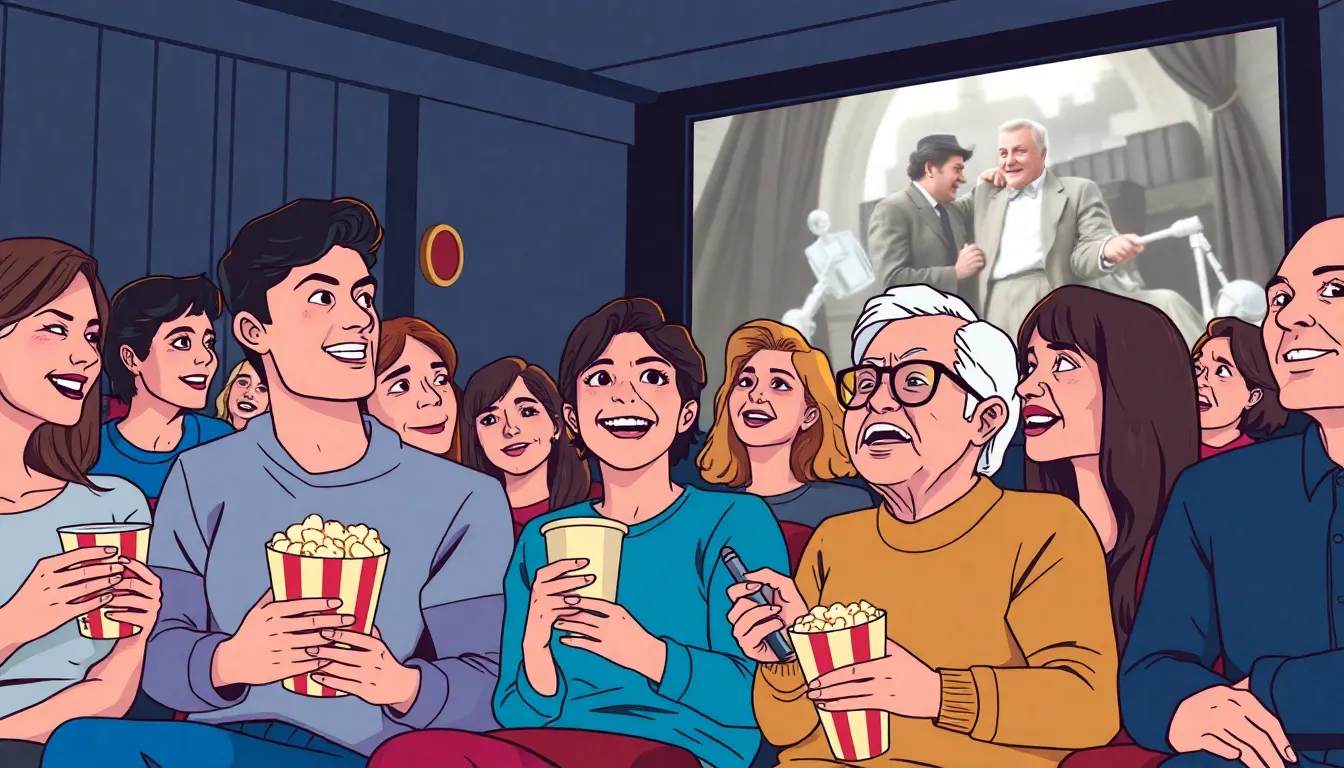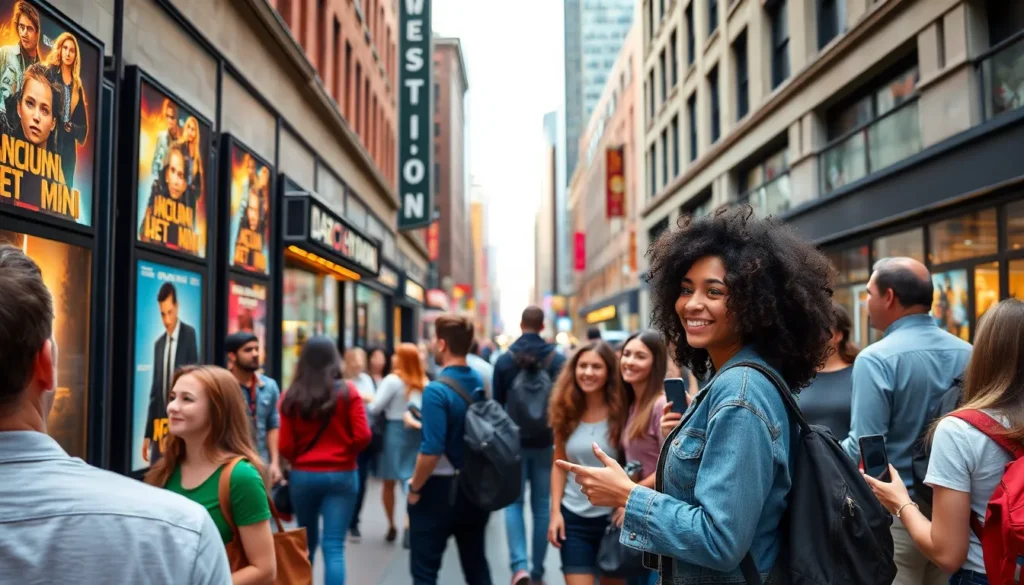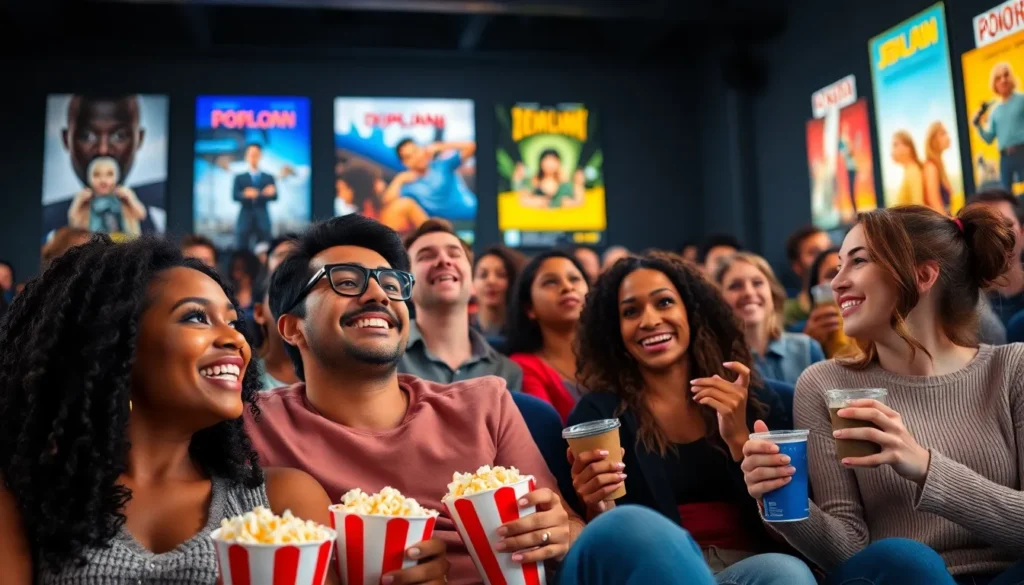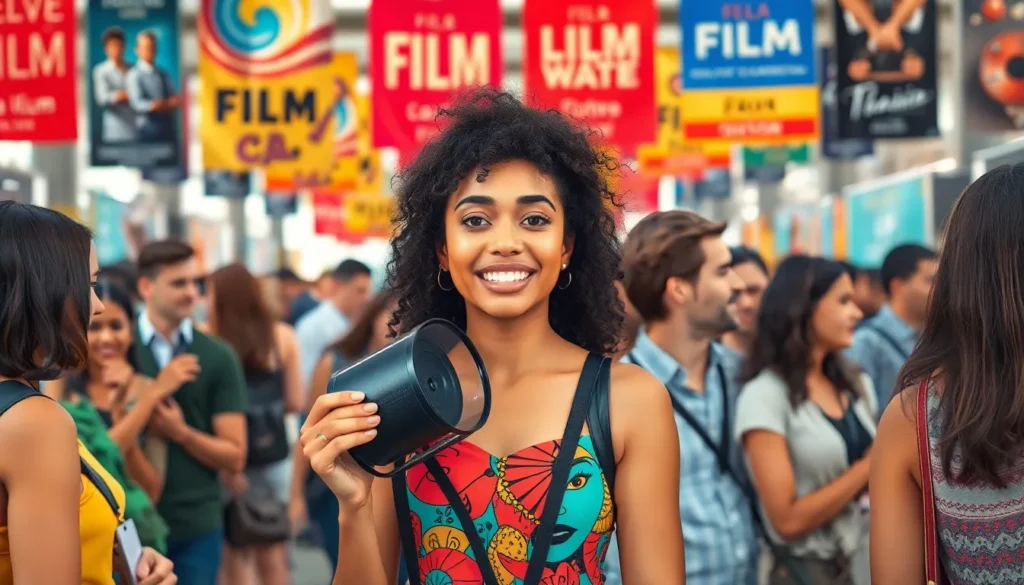Lights, camera, action! The world of cinema is a wild ride, and just like fashion, movie trends come and go faster than you can say “blockbuster.” From heart-pounding thrillers to whimsical rom-coms, the film industry is always evolving, reflecting society’s quirks and fads. If you think you’ve seen it all, think again—new trends are popping up like popcorn at a midnight screening.
Movie Trends
The film industry continually adapts to shifting audience preferences, revealing intriguing trends that define modern cinema.
Streaming Dominance
Streaming platforms hold a commanding position over the movie landscape. Businesses like Netflix and Amazon Prime Video consistently release original content, attracting millions of subscribers. Over 70% of US households now utilize streaming services, reflecting a clear preference for on-demand viewing. In response, traditional studios increasingly partner with these platforms, recognizing their significant reach and influence. Independent filmmakers also gain exposure through streaming services, offering diverse and unique films that might otherwise remain unseen.
Diversity in Storytelling
Diversity in storytelling represents another significant trend. Filmmakers now prioritize inclusive narratives that resonate with various audiences. Films featuring underrepresented voices saw a remarkable increase, making up 28% of the top-grossing movies in 2023. This shift results in stories that explore different cultures, perspectives, and experiences, enriching the cinematic landscape. With initiatives like the 2021 Inclusion Standards from the Academy, creators are encouraged to enhance representation behind the camera as well. Audiences respond positively, showing stronger connections to diverse characters and relatable storylines.
Nostalgia and Remakes

Nostalgia and remakes shape current cinematic trends, engaging audiences with familiar stories presented in new ways.
Classic Revivals
Classic revivals bring beloved narratives back to life. Recent adaptations of films from past decades tap into audience memories. Movies like “Ghostbusters: Afterlife” illustrate this trend, generating $195 million at the global box office. This revival strategy caters to both older viewers and younger fans discovering these stories for the first time. Enhanced production quality and modern storytelling techniques enrich these films, fostering emotional connections that resonate across generations.
Reimagined Franchises
Reimagined franchises reflect a growing trend in Hollywood, captivating audiences with fresh takes on established stories. Known entries like “The Lion King” and “Jurassic World” draw significant box office success, with “Jurassic World: Dominion” grossing over $1 billion worldwide. These reimaginings blend nostalgia with innovation, attracting loyal fans while inviting new viewers. Familiar characters and settings undergo transformations, keeping the essence intact while introducing contemporary themes that resonate with today’s audience.
Technology and Cinematic Experience
Technological advancements significantly shape the cinematic experience, creating immersive environments for audiences.
Virtual Reality in Film
Virtual reality transforms traditional storytelling by placing viewers in dynamic environments. Filmmakers explore new narratives through VR platforms, enhancing emotional connections with the content. Current data indicates that immersive films engage audiences significantly more than standard formats. Experiences like “The Invisible Man” utilize VR to create suspense and thrill, drawing viewers deeper into the story. Projects such as these illustrate how virtual reality enhances the overall impact of films, enabling audiences to become part of the narrative rather than passive observers.
The Rise of 4D Cinemas
4D cinemas offer a multi-sensory experience that goes beyond visuals and sound. These theaters integrate physical effects like motion, wind, and scents, immersing viewers fully in the film. Major releases like “Avatar” and “Jurassic World” benefit from these features, significantly increasing box office returns. As of 2023, approximately 1,000 4D screens exist globally, indicating a growing trend in this technology. This innovative approach attracts audiences craving unique experiences while also pushing filmmakers to create engaging content that utilizes these technological advancements effectively.
Social Media Influence on Movie Marketing
Social media plays a pivotal role in film marketing strategies. Platforms like Instagram, Twitter, and TikTok serve as primary avenues for studios to engage with audiences directly. These channels allow filmmakers to create buzz well before a release, generating anticipation around upcoming projects.
Content shared on social media effectively reaches millions. Statistically, around 82% of moviegoers discover films through platforms like Facebook or Instagram. These platforms enable trailers, behind-the-scenes clips, and interactive content, driving viewer interest. Engaging visuals and user-generated content often lead to increased discussions and organic promotion.
Influencers significantly impact viewer decisions. Collaborations between filmmakers and popular content creators amplify movie visibility. Influencers often share personal experiences or reactions, making movie promotions feel more relatable to their followers. This method aligns with increasing diversity in storytelling, resonating with audiences through inclusive narratives.
Audience engagement thrives on social media. Hashtags and challenges prompt users to participate, creating a community-centric approach to marketing. For instance, the challenge for “The Lion King” spawned millions of posts, reinforcing nostalgia while creating a collective viewing experience.
Movie studios adapt their strategies based on social media trends. As audience preferences evolve, so do marketing techniques. The shift toward digital billboards and viral campaigns reflects the growing importance of a robust online presence. Tracking analytics from social media platforms informs decision-making, ensuring promotions align with audience interests.
Overall, social media’s influence transforms how films reach viewers. Continuous engagement and innovative strategies keep audience interest alive. As the film industry grows, understanding this digital landscape becomes crucial for effective movie marketing.
Conclusion
The film industry stands at a fascinating crossroads where innovation meets tradition. As streaming platforms reshape viewing habits and diverse storytelling gains momentum, audiences are treated to a richer cinematic experience. Nostalgia-driven projects continue to captivate, while advancements in technology push the boundaries of how stories are told.
Social media plays an essential role in connecting filmmakers with viewers, creating a dynamic dialogue that enhances anticipation and engagement. With these trends in motion, the future of cinema promises to be vibrant and ever-evolving, ensuring that film remains a vital part of cultural expression. As trends emerge and shift, the excitement surrounding new releases will only grow, keeping audiences eagerly returning for more.



